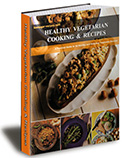Note: This is the fifth part of a multiple-posts about getting and preparing the best food. Please read the earlier posts to get more information.
Tips on Finding and Preparing the Best Food (part 1)
Tips on Finding and Preparing the Best Food – Vegetables (part 2)
Tips on Finding and Preparing the Best Food – Fruits (part 3)
Tips on Finding and Preparing the Best Food – Meat (part 4)
The most common types of poultry are chicken, turkey, and Rock Cornish game hens. These birds provide more protein and less fat than identical amounts of red meat. The dark meat in poultry is higher in fat and cholesterol than white meat. On rare occasions, duck and goose also may be available in supermarkets. These birds, however, have higher levels of fat and cholesterol.
The USDA inspects poultry that is sold in interstate commerce. Most of the poultry in supermarkets is top grade or Grade A poultry. This means that the poultry should be tender, meaty, and should have a good appearance. Poultry that receives grades B or C generally is tough and is reserved for soup, stews, or commercial use.
Listed below are tips on selecting chicken, turkey, and Rock Cornish game hens.
Chicken: Smaller chickens tend to be leaner than large Capons (castrated males) and stewing chickens have higher fat contents than broilers and fryers. Roasting chickens also are slightly higher in fat than broilers and fryers.
The legs and wings on chickens should spring back quickly when gently pulled away from the bird. A flexible breastbone is a sign of a young, tender chicken. The tip of the breastbone should bend readily. If it is stiff and fails to yield easily to pressure, the bird may be old and tough.
The color of the skin makes little difference in the taste or texture of the chicken. Yellow skin simply means that the chicken was fed primarily corn, while white-skinned chicken has been fed other types of grain. Chicken with skin that is rough, overly dry, broken, bruised, or tinged with purple should be avoided.
It generally is more economical to buy a whole chicken and cut it into parts at home than to buy prepackaged parts. But if everyone in the family prefers drumsticks, for instance, these can be bought packaged separately.
Turkey: Fresh turkeys, when available, usually have a better flavor and texture than frozen turkeys. Frozen birds often are self-basting, which means they have been injected with butter and other fats. This, of course, adds calories. Male and female birds (toms and hens) usually are identical in flavor, juiciness, and tenderness, but hens tend to cost slightly more per pound. The size of the turkey makes little difference in taste, texture, or tenderness.
Plump, large-breasted birds with meat extending well over the breastbone usually have the best flavor. The skin should be creamy white to pale yellow, smooth, and damp. Turkeys with skin that is purplish, dry, or broken should be rejected.
Rock Cornish Game Hens: Breeding Cornish gamecocks with Plymouth Rock chickens has produced small birds called Rock Cornish game hens. They contain all white meat, and when the skin and visible fat are removed, they are quite low in fat and cholesterol.
The best game hens are plump with yellowish, smooth skin. The most tender hens are young, from 5 to 7 weeks old. Hens that are more than two pounds tend to be tougher and dryer than smaller birds.
For new ideas on cooking delicious and healthy food, visit lowsugar-recipes.com.
Tags: poultry

[…] http://www.lowsugar-recipes.co.....d-poultry-…The USDA inspects poultry that is sold in interstate commerce. Most of the poultry in supermarkets is top grade or Grade A poultry. This means that the poultry should be tender, meaty, and should have a good appearance. … […]